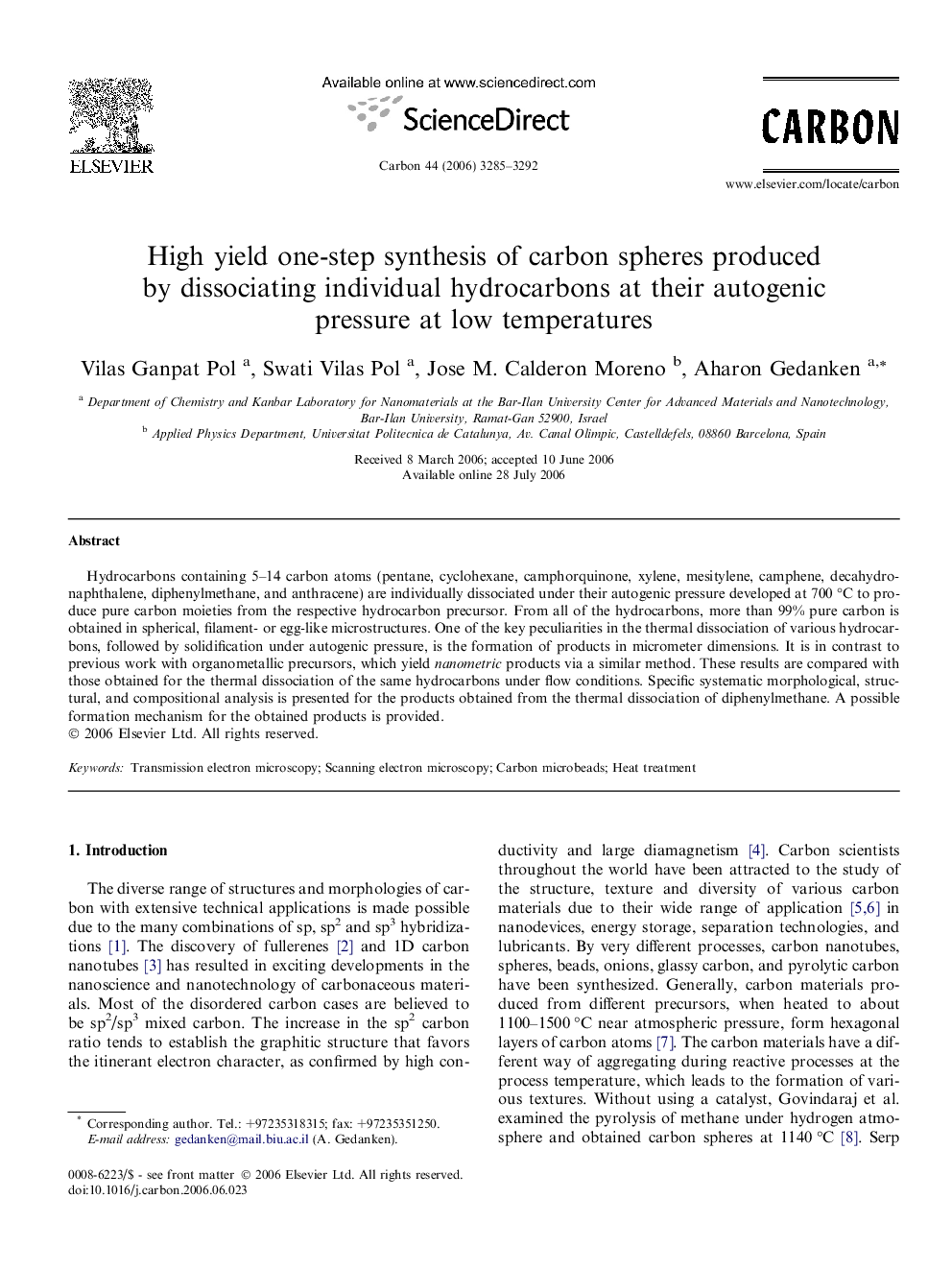| Article ID | Journal | Published Year | Pages | File Type |
|---|---|---|---|---|
| 1419631 | Carbon | 2006 | 8 Pages |
Hydrocarbons containing 5–14 carbon atoms (pentane, cyclohexane, camphorquinone, xylene, mesitylene, camphene, decahydronaphthalene, diphenylmethane, and anthracene) are individually dissociated under their autogenic pressure developed at 700 °C to produce pure carbon moieties from the respective hydrocarbon precursor. From all of the hydrocarbons, more than 99% pure carbon is obtained in spherical, filament- or egg-like microstructures. One of the key peculiarities in the thermal dissociation of various hydrocarbons, followed by solidification under autogenic pressure, is the formation of products in micrometer dimensions. It is in contrast to previous work with organometallic precursors, which yield nanometric products via a similar method. These results are compared with those obtained for the thermal dissociation of the same hydrocarbons under flow conditions. Specific systematic morphological, structural, and compositional analysis is presented for the products obtained from the thermal dissociation of diphenylmethane. A possible formation mechanism for the obtained products is provided.
